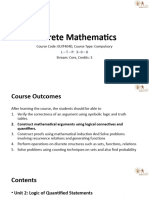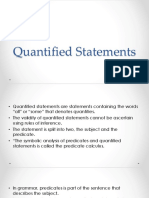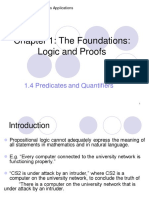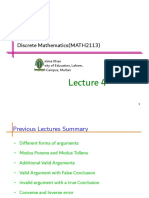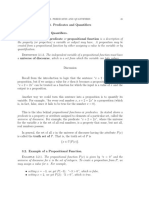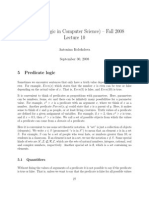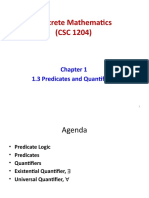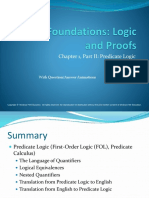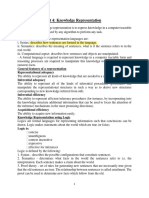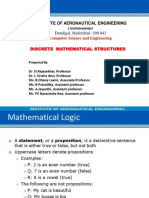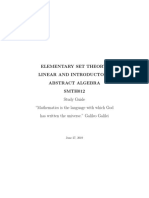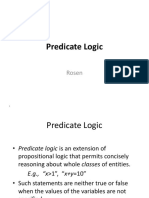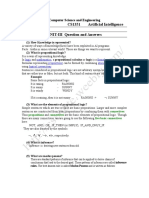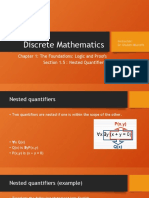0% found this document useful (0 votes)
107 views23 pagesPredicates & Quantifiers Explained
This document discusses predicates and quantified statements. It defines a predicate as a sentence containing variables that becomes a statement when values are substituted for the variables. It introduces universal and existential quantifiers to make statements about all or some elements of a domain. Examples are provided to illustrate predicates, quantifiers, and equivalent forms of universal and existential statements.
Uploaded by
RuelXDCopyright
© © All Rights Reserved
We take content rights seriously. If you suspect this is your content, claim it here.
Available Formats
Download as PDF, TXT or read online on Scribd
0% found this document useful (0 votes)
107 views23 pagesPredicates & Quantifiers Explained
This document discusses predicates and quantified statements. It defines a predicate as a sentence containing variables that becomes a statement when values are substituted for the variables. It introduces universal and existential quantifiers to make statements about all or some elements of a domain. Examples are provided to illustrate predicates, quantifiers, and equivalent forms of universal and existential statements.
Uploaded by
RuelXDCopyright
© © All Rights Reserved
We take content rights seriously. If you suspect this is your content, claim it here.
Available Formats
Download as PDF, TXT or read online on Scribd
/ 23

